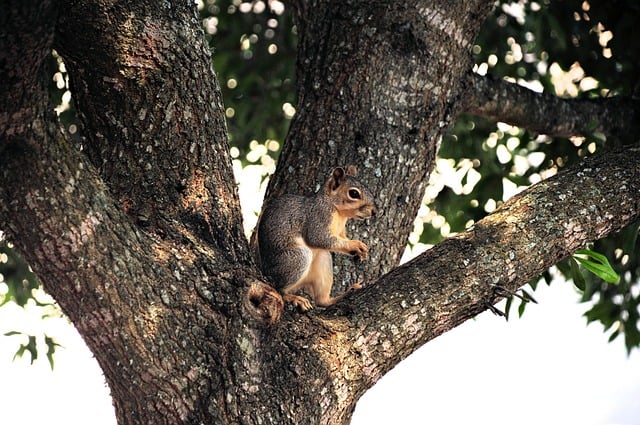In Tucson's diverse habitats, particularly Marana, managing rodent populations is a year-round task necessitating tailored strategies to address the challenges posed by the region's semi-arid climate and seasonal variations. Homeowners and pest control professionals must adapt their rodent control Tucson measures to the local weather patterns, especially during the monsoon season when rodent activity peaks due to abundant vegetation and water. Effective control requires employing safe traps and bait stations, with regular monitoring and maintenance to ensure they remain secure for pets and children. The choice of control methods should be based on the dietary preferences of local rodents, which often include seeds and grains. Seasonal adjustments in bait types and quantities are crucial due to the rodents' changing needs throughout the year. A proactive, seasonally timed program is essential for protecting homes from damage and guarding public health against rodent-borne diseases. Expert guidance stresses customizing rodent control measures to effectively manage these persistent pests in Tucson and its vicinity, including Marana, ensuring a successful and humane approach to pest exclusion.
Navigating the arid landscape of Marana, home to Tucson, presents unique challenges for maintaining rodent-free environments. As seasons shift and temperatures fluctuate, so too do the behaviors and habits of these pests. This article delves into tailored strategies for seasonal rodent traps and baits that cater specifically to the Marana climate. By understanding the best practices for rodent control in Tucson, residents can safeguard their properties effectively throughout the year. Whether preparing for the monsoon’s humidity or the scorching desert heat, learn how to select the right traps and baits to ensure efficacious pest exclusion.
- Optimizing Rodent Control in Tucson: Seasonal Strategies for Effective Trapping and Baiting
- Seasonal Rodent Management in Marana Climate: Selecting the Right Traps and Baits for Efficacious Pest Exclusion
Optimizing Rodent Control in Tucson: Seasonal Strategies for Effective Trapping and Baiting

In the arid climate of Tucson, within Marana’s diverse habitats, rodents like rats and mice can pose significant challenges to property owners. To effectively manage these challenges, it is crucial to employ seasonal strategies tailored for rodent control in Tucson. The varying weather conditions throughout the year—from the scorching summers to mild winters—affect rodent behavior and habitat preferences, necessitating an adaptive approach to trapping and baiting. Homeowners should consider the specific seasonal patterns of these pests, as their activity levels fluctuate with temperature and rainfall. For instance, during the monsoon season, when vegetation becomes lush and water is more abundant, rodent populations may increase, making it imperative to intensify control measures at this time. Employing a combination of traps and bait stations that are safe for pets and children, yet effective in eliminating rodents, is key. Regular inspections and maintenance of these stations are necessary to ensure they remain functional and to adjust the type and amount of bait as needed, given the seasonal variations in rodent dietary preferences. By staying vigilant and proactive with a well-timed and seasonally optimized rodent control program, Tucson residents can effectively protect their homes and well-being from these persistent pests.
Seasonal Rodent Management in Marana Climate: Selecting the Right Traps and Baits for Efficacious Pest Exclusion

In Marana, a suburb of Tucson, Arizona, effective rodent control measures are critical due to its semi-arid climate and varied seasons. The fluctuating temperatures and the abundance of food sources can make it challenging to manage rodent populations consistently. Homeowners and pest management professionals in the area must employ seasonal rodent management strategies that adapt to the local weather patterns. During the monsoon season, when vegetation is lush and food sources are more abundant, rodents may be more active. This is the optimal time to set traps and bait stations, taking advantage of the increased activity levels to ensure higher capture rates.
When selecting traps and baits for Marana’s environment, it’s crucial to consider the types of rodents prevalent in the area. Snap traps, also known as mechanical traps, are a reliable option for immediate results, while rodenticides should be used with caution due to environmental and safety concerns. Bait stations, filled with rodenticide baits that are safe around pets and children when placed correctly, can provide a long-term solution. The choice of bait should align with the rodents’ dietary preferences, which often include seeds and grains, making anticoagulant baits a popular and effective choice in the region. For the best results, these traps and baits should be placed strategically near burrows or areas of high rodent activity, ensuring that they remain out of reach of non-target species. In Marana, where the climate influences rodent behavior, a proactive approach to seasonal rodent management is essential for maintaining a pest-free home environment. This approach not only protects property from damage but also safeguards public health by preventing the spread of diseases commonly associated with rodents. Rodent control in Tucson and its surrounding areas like Marana requires a tailored strategy that considers local weather conditions, rodent species, and seasonal variations to achieve the most efficacious pest exclusion.
Effective rodent control in Marana’s unique climate requires a seasonal approach tailored to local conditions. This article has outlined strategies for selecting appropriate traps and baits, emphasizing the importance of adaptability and awareness of local environmental factors. By understanding the seasonal patterns of rodent activity and utilizing Tucson’s top-rated rodent control services, residents can mitigate infestation risks. Implementing these seasonal management practices not only protects properties but also contributes to community health and well-being. As the seasons change, staying vigilant with proactive measures will ensure an effective barrier against these pests year-round.
